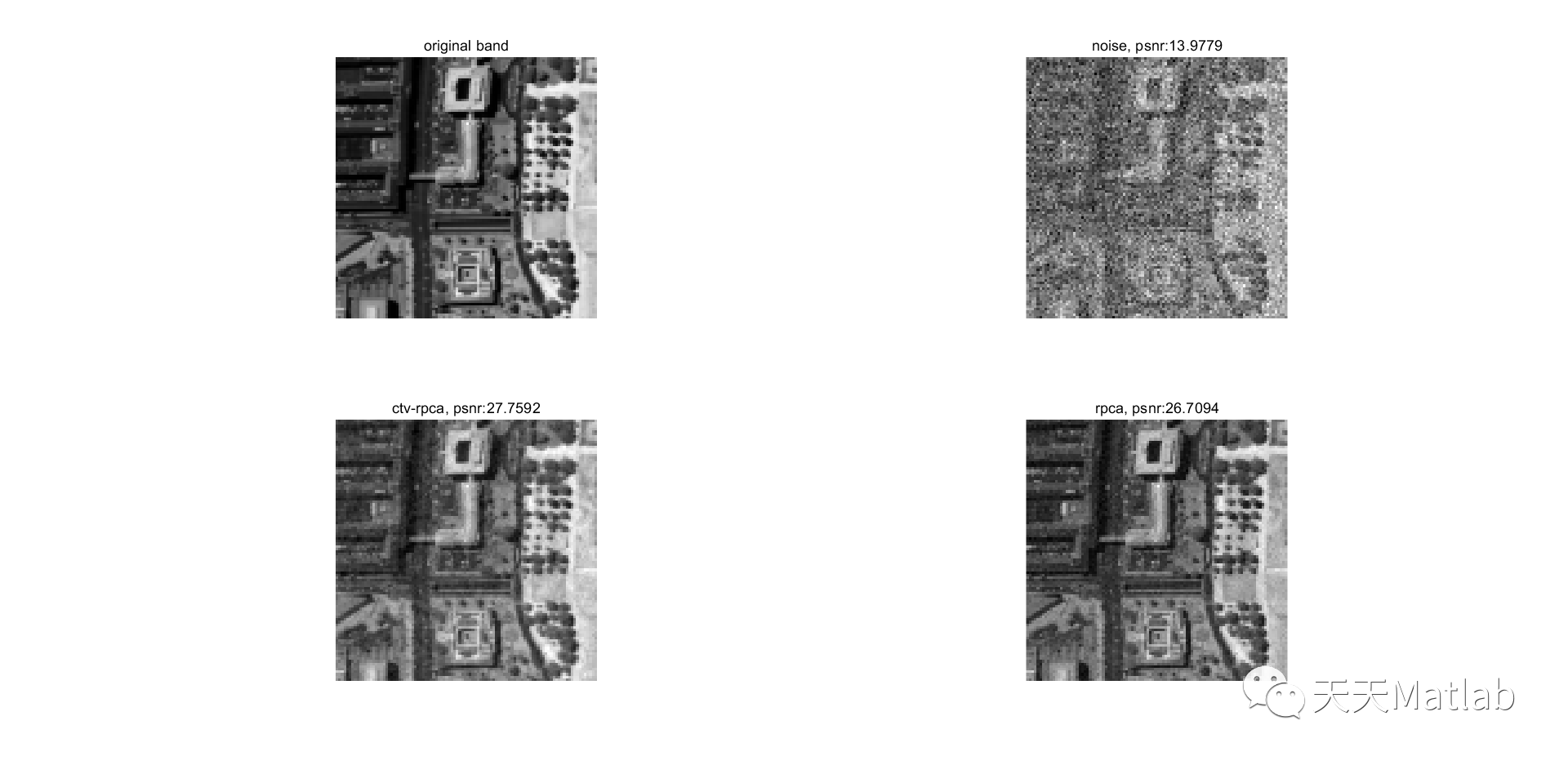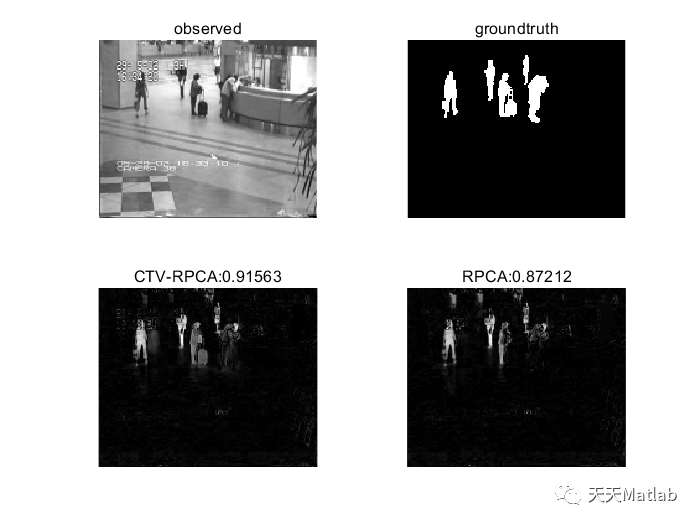✅作者简介:热爱科研的Matlab仿真开发者,修心和技术同步精进,matlab项目合作可私信。
🍎个人主页:Matlab科研工作室
🍊个人信条:格物致知。
更多Matlab仿真内容点击👇
⛄ 内容介绍
It is known that the decomposition in low-rank and sparse matrices (\textbf{L+S} for short) can be achieved by several Robust PCA techniques. Besides the low rankness, the local smoothness (\textbf{LSS}) is a vitally essential prior for many real-world matrix data such as hyperspectral images and surveillance videos, which makes such matrices have low-rankness and local smoothness properties at the same time. This poses an interesting question: Can we make a matrix decomposition in terms of \textbf{L\&LSS +S } form exactly? To address this issue, we propose in this paper a new RPCA model based on three-dimensional correlated total variation regularization (3DCTV-RPCA for short) by fully exploiting and encoding the prior expression underlying such joint low-rank and local smoothness matrices. Specifically, using a modification of Golfing scheme, we prove that under some mild assumptions, the proposed 3DCTV-RPCA model can decompose both components exactly, which should be the first theoretical guarantee among all such related methods combining low rankness and local smoothness. In addition, by utilizing Fast Fourier Transform (FFT), we propose an efficient ADMM algorithm with a solid convergence guarantee for solving the resulting optimization problem. Finally, a series of experiments on both simulations and real applications are carried out to demonstrate the general validity of the proposed 3DCTV-RPCA model.
⛄ 部分代码
clear all;clc;
% addpath(genpath('../CTV_code/')) % linux/MacOS platform
addpath(genpath('..\CTV_code\')) % windows platform
%% load data
hsi_name = 'pure_DCmall_small';
load([hsi_name,'.mat'])
clean_data = Ori_H;
clean_data = Normalize(clean_data);
[M,N,p] = size(clean_data);
tic
gaussian_level = 0.2;
sparse_level = 0.0;
noise_data = GetNoise(clean_data,gaussian_level,sparse_level);
D = reshape(noise_data,[M*N,p]);
mpsnr = zeros(3,1);
mssim = zeros(3,1);
ergas = zeros(3,1);
[mpsnr(1),mssim(1),ergas(1)]=msqia(clean_data, noise_data);
%% CTV-RPCA
it =2;
fprintf('======== CTV-RPCA ========\n')
opts.rho = 1.5;
ctv_out = ctv_rpca(noise_data,opts);
[mpsnr(it),mssim(it),ergas(it)]=msqia(clean_data, ctv_out);
%% RPCA
it =3;
D = zeros(M*N,p) ;
for i=1:p
bandp = noise_data(:,:,i);
D(:,i)= bandp(:);
end
fprintf('======== RPCA ========\n')
A_hat = rpca_m(D);
rpca_out = reshape(A_hat,[M,N,p]);
[mpsnr(it),mssim(it),ergas(it)]=msqia(clean_data, rpca_out);
showband = 103;
figure;
Y = clean_data(:,:,showband);
subplot(2,2,1);imshow(Y,[]);title('original band')
Y = noise_data(:,:,showband);
subplot(2,2,2);imshow(Y,[]);title(['noise, psnr:',num2str(mpsnr(1))])
Y = ctv_out(:,:,showband);
subplot(2,2,3);imshow(Y,[]);title(['ctv-rpca, psnr:',num2str(mpsnr(2))])
Y = rpca_out(:,:,showband);
subplot(2,2,4);imshow(Y,[]);title(['rpca, psnr:',num2str(mpsnr(3))])
⛄ 运行结果


⛄ 参考文献
[1] Shijila B , Tom A J , George S N . Moving Object Detection by Low Rank Approximation and l 1 -TV Regularization on RPCA framework[J]. Journal of Visual Communication and Image Representation, 2018, 56:188-200.
[2] Wang S , Xia K , Wang L , et al. Improved RPCA method via non-convex regularisation for image denoising. 2020.
[3] Peng J , Wang Y , Zhang H , et al. Exact Decomposition of Joint Low Rankness and Local Smoothness Plus Sparse Matrices[J]. arXiv e-prints, 2022.
⛳️ 代码获取关注我
❤️部分理论引用网络文献,若有侵权联系博主删除
❤️ 关注我领取海量matlab电子书和数学建模资料























 1万+
1万+











 被折叠的 条评论
为什么被折叠?
被折叠的 条评论
为什么被折叠?










